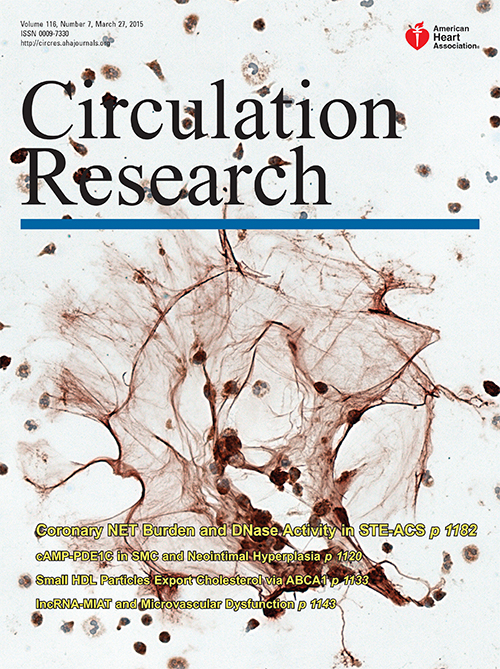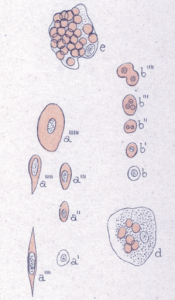Thrombi and neutrophils
Michel JB, Ho-Tin-Noé B
2015 • Circ Res • [pdf] (Editorial to this paper)![]()
More than a century ago, in 1881, Bizzozero discovered platelets and their role in primary hemostasis. Since this founding study, it has been shown that, in addition to the scaffold of platelets and fibrin, other proteins and cells play an important role in thrombus formation and stabilization.
[…]Intravascular thrombi, whatever their initial cause and localization, are highly pathogenic because they not only induce downstream tissue ischemia by occluding arteries but also participate in injury of the surrounding tissue by releasing proteolytic and oxidative enzymes. Because of the various mechanisms of resistance to thrombolysis by r-tPA, new therapeutic approaches for the treatment of occlusive thrombosis are being actively investigated. In this context, the study of Mangold et al is of critical interest as it designates NETs as a source of new biomarkers to define the biological process of acute coronary syndrome and DNA as a therapeutic target for increasing the efficacy of r-tPA–induced thrombus lysis. Furthermore, this study strengthens the idea that periodontal diseases can affect the development and evolution of atherothrombotic diseases.


